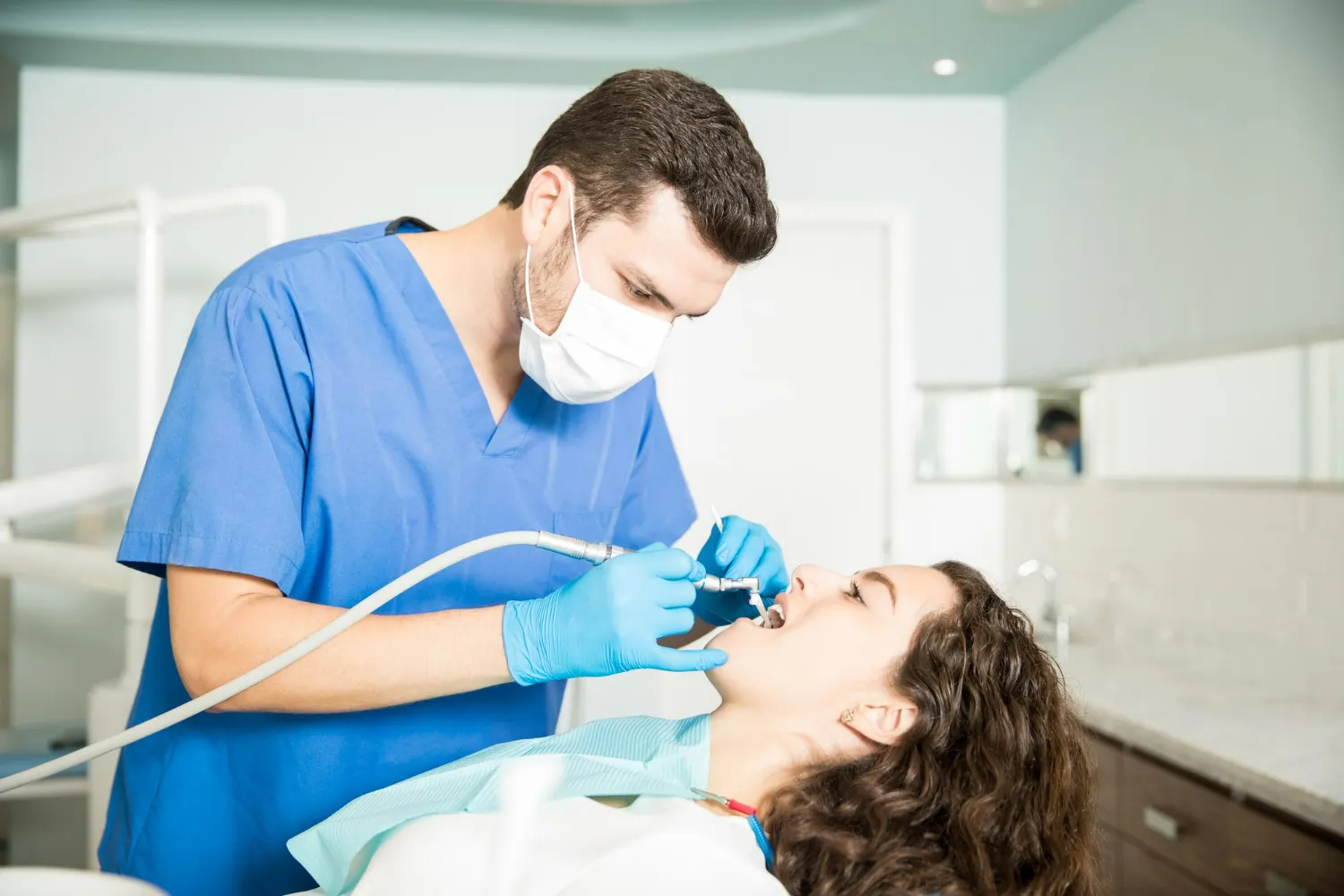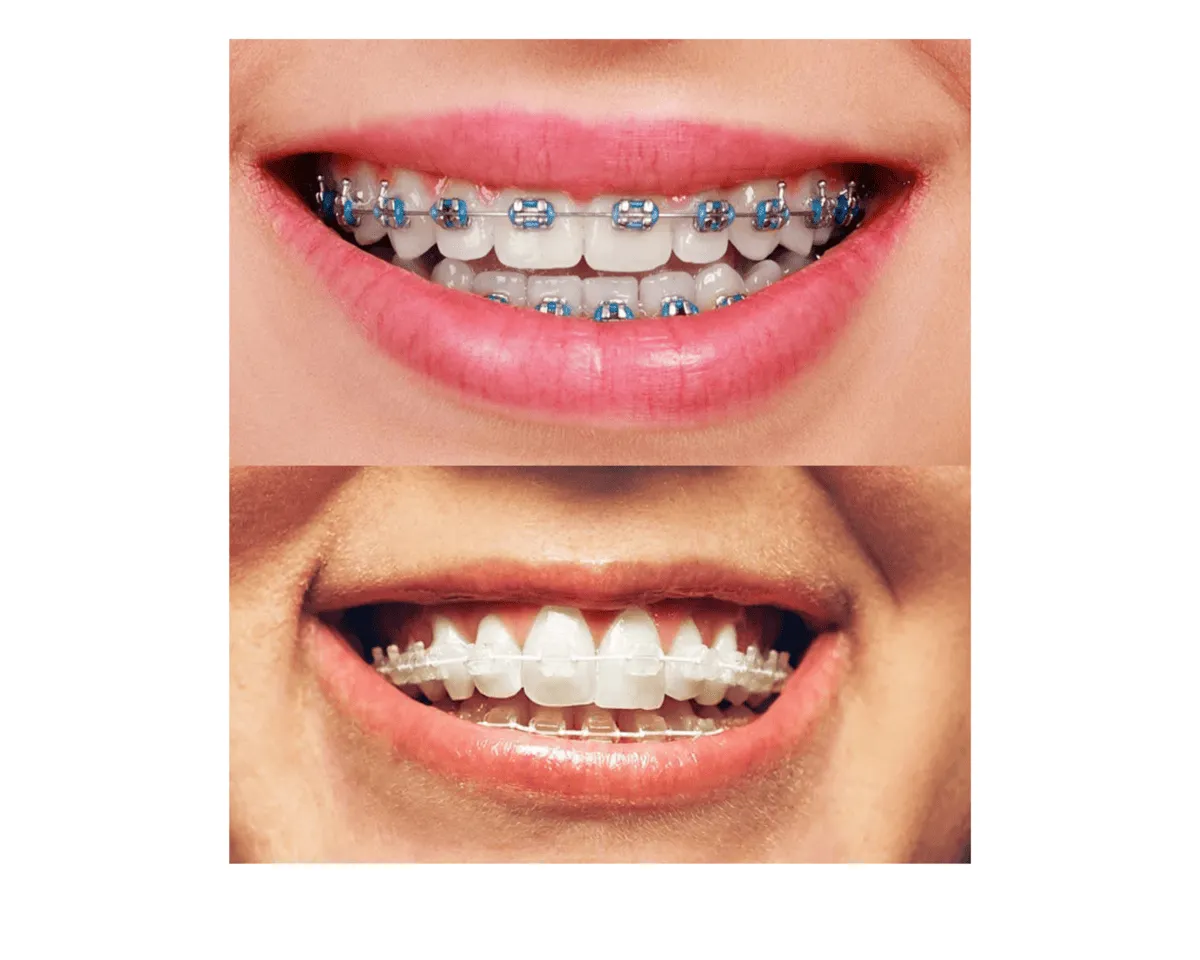Retainers are indispensable allies in maintaining that perfect smile you’ve worked so hard to achieve. Yet too often, they slip into neglect, harbouring bacteria and odours that counteract their very purpose.
In this guide, we’ll journey through the life of your retainer, day by day and week by week, uncovering precise cleaning routines, expert tips, and essential dos and don’ts to preserve hygiene and longevity, all backed by Birchgrove Dental’s professional standards.
Understanding Your Retainer and Why Hygiene Matters
Retainers are orthodontic devices designed to hold your teeth in place after braces or aligner treatments. Whether you have clear plastic retainers, wire-based Hawley retainers, or fixed retainers, they all require daily cleaning to remain free of bacteria, plaque, and debris. Without proper care, bacteria can build up, leading to bad breath, gum irritation, or even plaque build-up that could affect your oral health.
Additionally, inadequate cleaning can cause wear and tear on the retainer, reducing its effectiveness and potentially leading to the need for a replacement sooner than expected.
Good hygiene practices will keep your smile fresh, your retainer functional, and your overall oral health in check. In the following sections, we’ll explore the steps to clean retainers correctly, identify common mistakes to avoid, and offer care advice tailored to different types of retainers.
Daily Cleaning Routine
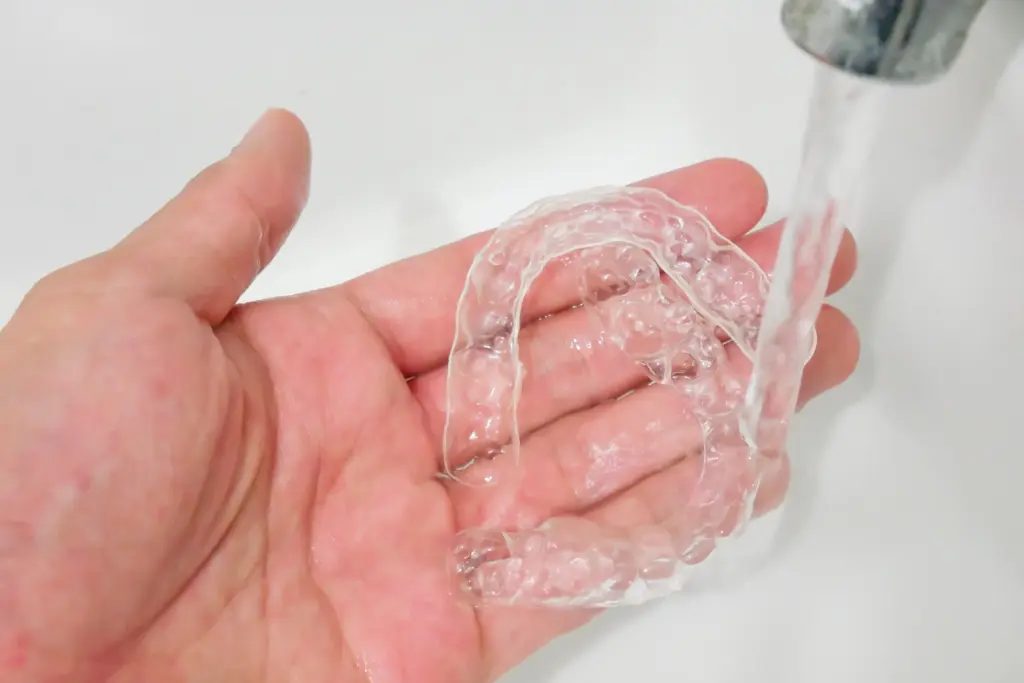
Maintaining a consistent cleaning routine is crucial to ensure that your retainer stays in good condition and free from harmful bacteria.
Morning and Evening Steps
- Rinse Immediately After Removal: As soon as you remove your retainer, rinse it under cool or lukewarm water to wash away any saliva or loose debris. This helps prevent build-up that could lead to stains or a bad smell. Never use hot water, as it can warp the plastic and affect the fit of the retainer.
- Gentle Brushing: Use a soft-bristled toothbrush to clean your retainer. A toothbrush specifically designed for retainers or an old toothbrush you no longer use for your teeth will work just as well. Gently scrub both the inside and outside of the retainer, taking care to reach all areas, especially where food particles and bacteria might collect.
- Soap or Antibacterial Cleaner: Apply a small amount of mild dish soap or an antibacterial soap to the toothbrush. Avoid using regular toothpaste as it can be too abrasive and may scratch the surface of your retainer. Brush the retainer gently, ensuring that all surfaces are clean.
- Rinse Thoroughly: After brushing, rinse your retainer under lukewarm water to remove any remaining soap residue. This is important as leftover soap can cause an unpleasant taste and might irritate your mouth.
Adhering to this basic routine every day, particularly after meals and before bed, will prevent plaque build-up and ensure your retainer stays fresh.
Step-by-Step Guide on How to Clean Retainers
If you want to ensure your retainer remains sparkling clean, follow these simple, effective steps.
1. Brush Gently with a Soft-Bristled Brush
Using a dedicated, soft-bristled brush, gently scrub both the inside and outside of the retainer. Do not use hard-bristled brushes or electric toothbrushes, as these can cause scratches or damage to the retainer surface.
2. Use Cool or Lukewarm Water
Avoid using hot water, as it can distort the retainer’s shape and functionality. Lukewarm water is best because it effectively rinses away debris without causing damage.
3. Apply Mild Soap or Antibacterial Soap
Using a mild, unscented dish soap or antibacterial soap, apply a small amount to the toothbrush. Avoid soaps with fragrances or strong chemicals, as these can leave behind residues or irritate the inside of your mouth.
4. Rinse Thoroughly
After brushing, thoroughly rinse your retainer with cool or lukewarm water. Make sure all soap residue is removed, as lingering soap can affect the taste and cleanliness of the retainer.
5. Weekly Deep-Clean Method
At least once a week, give your retainer a deeper clean using a retainer-specific cleaning solution or effervescent cleaning tablets. These products are designed to help remove bacteria, plaque, and mineral buildup. Soak the retainer in the solution for 15 to 20 minutes and rinse it thoroughly.
Weekly Deep-Clean Methods
In addition to daily brushing, weekly deep cleaning is essential to keep your retainer in optimal condition.
Effervescent Tablet Soak
An effervescent cleaning tablet like Retainer Brite is a popular method for a thorough, chemical-free clean. These tablets dissolve in water, and the fizzing action helps to break down mineral deposits and bacteria.
- How to Use: Dissolve one cleaning tablet in lukewarm water. Submerge your retainer in the solution and allow it to soak for 15-20 minutes. Afterwards, rinse the retainer thoroughly and brush it gently to remove any loose debris.
Baking Soda & Vinegar Soak
Another effective yet gentle method involves a mixture of bicarbonate of soda (baking soda) and white vinegar.
- How to Use: Mix 1 tablespoon of baking soda with 2 tablespoons of vinegar in a bowl. Add enough warm water to submerge the retainer completely. Soak the retainer for about 10 to 15 minutes. This method works well to remove any stubborn stains or mineral buildup. After soaking, brush the retainer gently and rinse thoroughly.
Limit vinegar soaks to once every two weeks to prevent damaging softer acrylic materials.
Material-Specific Care
Different types of retainers require different cleaning methods to ensure longevity and effectiveness.
Clear Plastic (Essix) Retainers
Clear plastic retainers are the most common, as they’re discreet and comfortable. However, they are heat-sensitive and can warp or crack if exposed to hot water or harsh cleaners.
- How to Clean: Use a soft brush and mild soap or antibacterial soap to clean the surfaces. Avoid using toothpaste, as it may scratch the surface and cause discolouration. For a deeper clean, soak the retainer in an effervescent cleaning solution once a week.
Hawley Retainers (Wire & Acrylic)
Hawley retainers are made of a combination of acrylic and metal wires. They are durable but require careful cleaning of both the plastic parts and the wire components.
- How to Clean: Clean the acrylic portion of the retainer with mild soap and water, using a soft-bristled toothbrush. The metal wires should be gently scrubbed with the brush, and you may want to use a slightly dampened cloth to wipe down the metal components. Avoid using anything that could cause the metal wires to rust.
Fixed (Bonded) Retainers
Fixed or bonded retainers are permanent appliances glued behind the teeth. These retainers require special attention to ensure that they stay clean without damaging the adhesive.
- How to Clean: Brush gently under running water with a soft brush, taking care to remove any debris that may be caught in the wire. You can also floss around the bonded retainer using floss threaders to ensure you clean between the teeth and the retainer.
Common Cleaning Mistakes to Avoid
To avoid damaging your retainer or jeopardising your oral health, here are some common cleaning mistakes to steer clear of:
- Boiling Water: Never use boiling water to clean your retainer. The high temperature can warp the plastic and ruin the fit.
- Abrasive Toothpaste: Toothpaste may seem like a convenient option, but it contains abrasive particles that can scratch your retainer, making it prone to staining and bacterial buildup.
- Using Harsh Chemicals: Stay away from bleach, mouthwash with alcohol, or any harsh chemical cleaners. These can degrade the retainer’s materials and cause irreversible damage.
- Dry Storage: Storing your retainer in a dry case for long periods can lead to brittleness, particularly for plastic retainers. Always store retainers in their case with ventilation, ensuring they don’t dry out.
Travel & On-the-Go Hygiene Tips
Cleaning your retainer doesn’t have to be difficult while you’re away from home. With a few simple tools and a bit of preparation, you can maintain proper hygiene on the go.
- Ventilated Travel Case: Always carry a travel case that allows airflow. This helps prevent moisture build-up and bacterial growth when the retainer is not in use.
- Pre-Portioned Soap Pods or Tablets: For ease, pack pre-measured dish soap pods or retainer cleaning tablets that you can quickly dissolve in water.
- Disposable Travel Brush: If you’re travelling, pack a disposable toothbrush or a retainer brush to make cleaning easier.
- Avoid Storing in Plastic Bags: Storing retainers in sealed plastic bags can cause them to sweat and grow bacteria. Opt for cases designed for retention and ventilation.
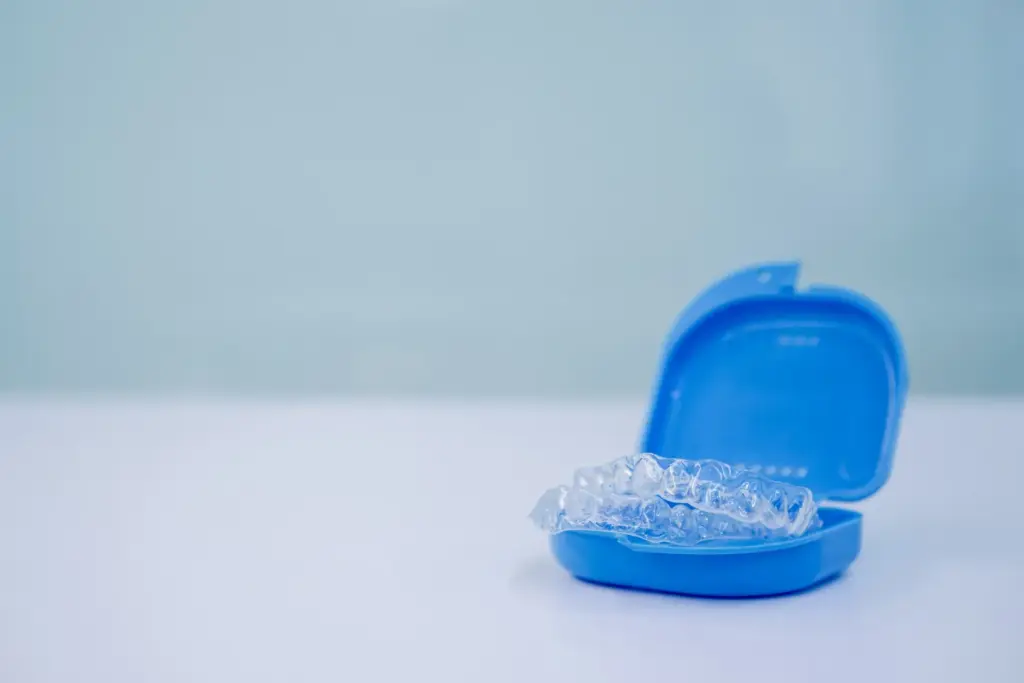
When to Replace Your Retainer
Retainers can last a long time if maintained properly, but some signs indicate it’s time to replace them:
- Persistent Staining: If stains don’t come out even after thorough cleaning, it may be a sign that the material is degrading.
- Cracks or Chips: Small cracks or chips can lead to further damage and a loss of functionality. If the retainer starts to feel uncomfortable or loose, it may be time for a replacement.
- Fit Issues: If your retainer no longer fits snugly or feels too tight, it may have warped over time and needs replacing. The NHS advises regular checks with your dentist to ensure your retainer remains functional.
- Wire Corrosion: If you have a Hawley retainer and notice corrosion or rust on the metal parts, it’s a clear indicator that you need a new retainer.
Final Thoughts
Proper cleaning and care of your retainer are crucial in maintaining your dental health and the longevity of your appliance. By following these steps, you can keep your retainer free from harmful bacteria, avoid damage, and ensure that your smile stays straight for years to come.
If you need personalised advice or help with maintaining your retainer, Birchgrove Dental offers professional consultations. Book your appointment today to ensure your retainer and your smile stay in top condition.
